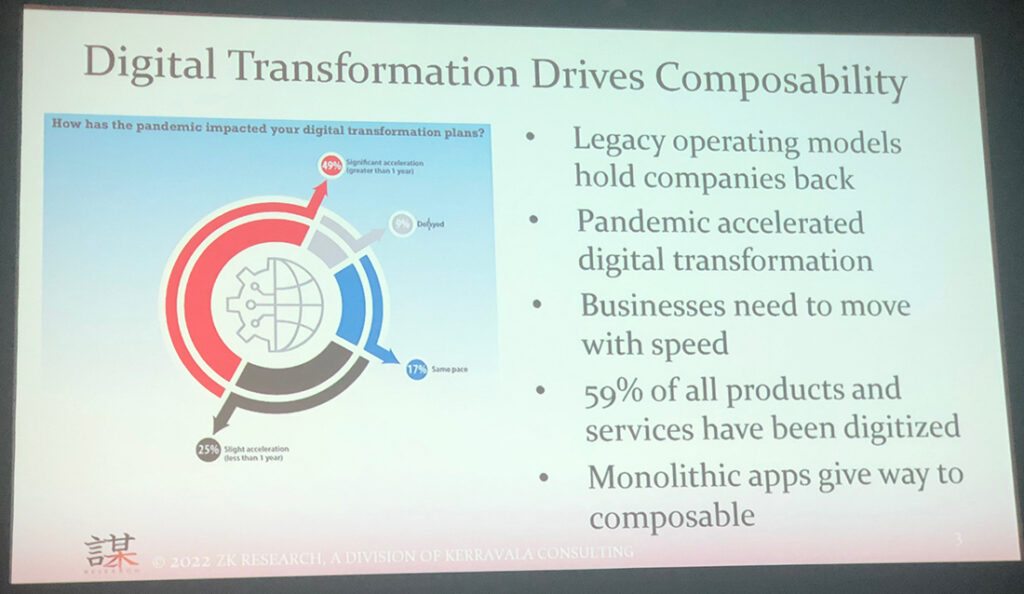While composability is still an emerging concept in the communications sector, it can offer significant benefits to organizations seeking to personalize their customer and employee experiences.
“Composability opens the door to innovation, said Simon Harrison, SVP and chief marketing officer, Avaya. “In today’s experience economy, composability allows organizations to built customized applications and workflows.”
Harrison was a panelist at an Enterprise Connect 2022 session, “Making the Composable Enterprise Real,” moderated by Zeus Kerravala, founder, ZK Research. Other panelists included Mike Breevoort, head of product development platform experience, Slack; and Savinay Berry, EVP product and engineering, Vonage.
“Communication is rarely on the leading edge of technology because of its critical nature,” said Kerravala. “But today, companies compete on speed, and traditional centralized communications models are slow to adopt.”
Kerravala added that prebuilt applications are general in nature, and don’t work in all situations. For instance, healthcare, education and finance have three different workflows that vary from online retail and service organizations. So after investing in CPaaS (communications platform as a service), a composability strategy allows organizations to deliver personalized experiences more quickly and easily than building a new application from scratch.

“Composability involves using a combination of packaged apps and app building blocks to create better business outcomes,” he said. “They complement your development team’s efforts.
Breevoort said it’s important for organizations to break out of their communication silos. “You need to put the tools in the hands of people who are closer to their work,” he said. “Remember that nobody wants to create an app. They want to solve a problem as quickly and easily as possible.”
Harrison said that using APIs to develop new software tools is not that difficult or intimidating. “When we look at what we want to do in our organizations, we can put the tools in the hands of everyday users, giving them a hands-on opportunity to shape experiences.”
Another goal of composability strategies is to work smarter and be proactive in creating experiences rather than being in reactive mode, added Harrison. “This can help you keep workers engaged, while taking your current applications to the next level.”
A variety of use cases
Composability can be incorporated into building applications for a wide variety of use cases. For instance, Berry pointed to the ability to integrate messaging with the CRM to push personalized messages on vaccinations or other health issues to certain groups of employees.
“We have seen Avaya Spaces users in fields like education, add new tools on top of CPaaS,” said Harrison. “You can incorporate voice biometrics or other security functions to support your customers and users. “After your core is in place, you can enable the experience builders in your organization.”
Breevoort cited the example of a telecom company whose API allowed customers to post questions about specific phone models and get an answer right away, rather than waiting several hours for a callback or email. “Let IT get out of the way, and give your users the ability to build simple tools that meet their needs right now,” he added.
As for getting started with composability, several panelists recommended talking with the business units first and starting small with a pilot project or two. “Think about the experiences you want to create and use that as your starting point,” said Harrison.
Summing up the session, Kerravala said, “Composability is easier than you think. As an IT professional, you should become familiar with these approaches from a career standpoint. Today, you will be expected to do more with the products you purchase, and composability lets you bring more value to your organization.”
